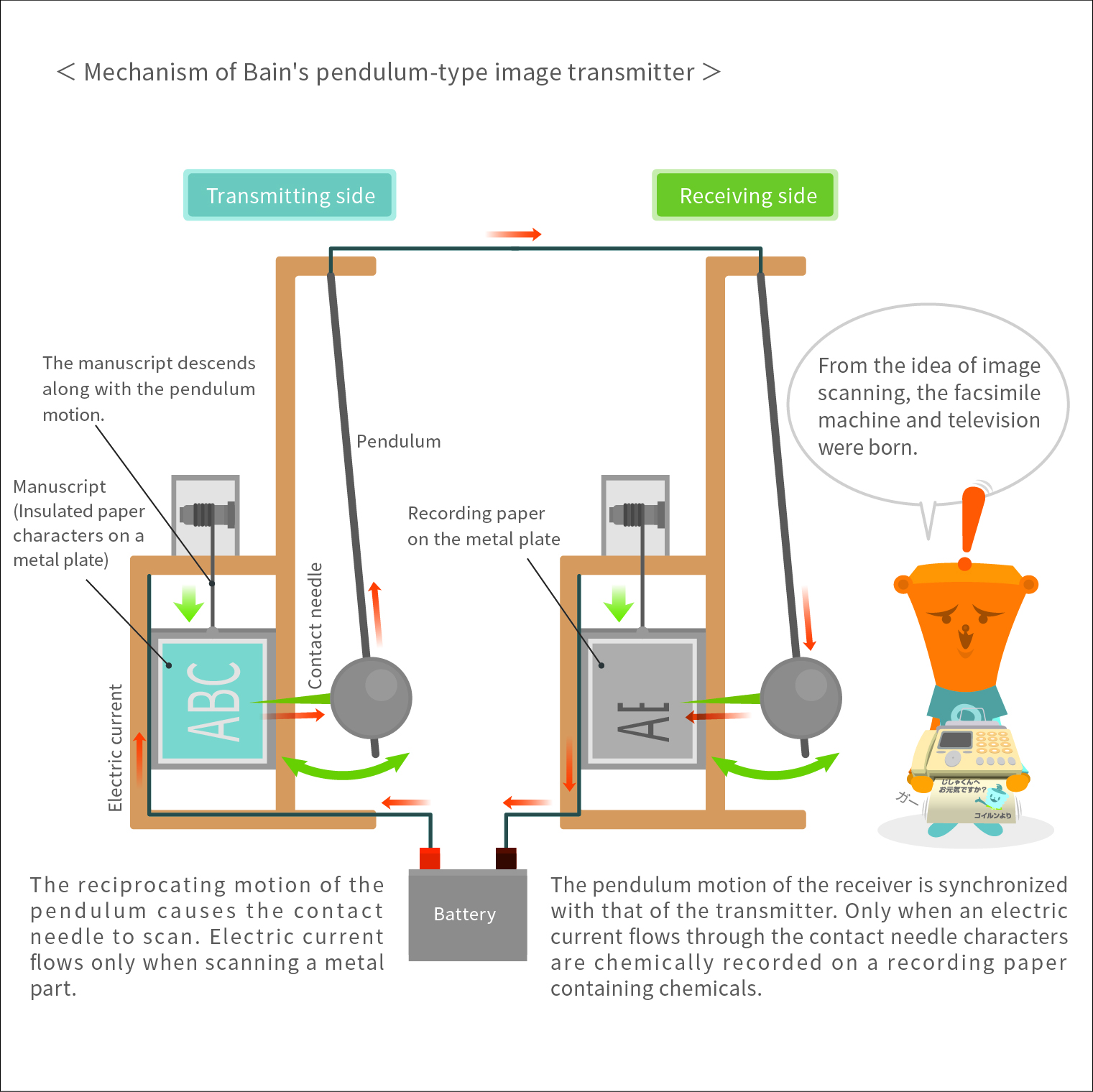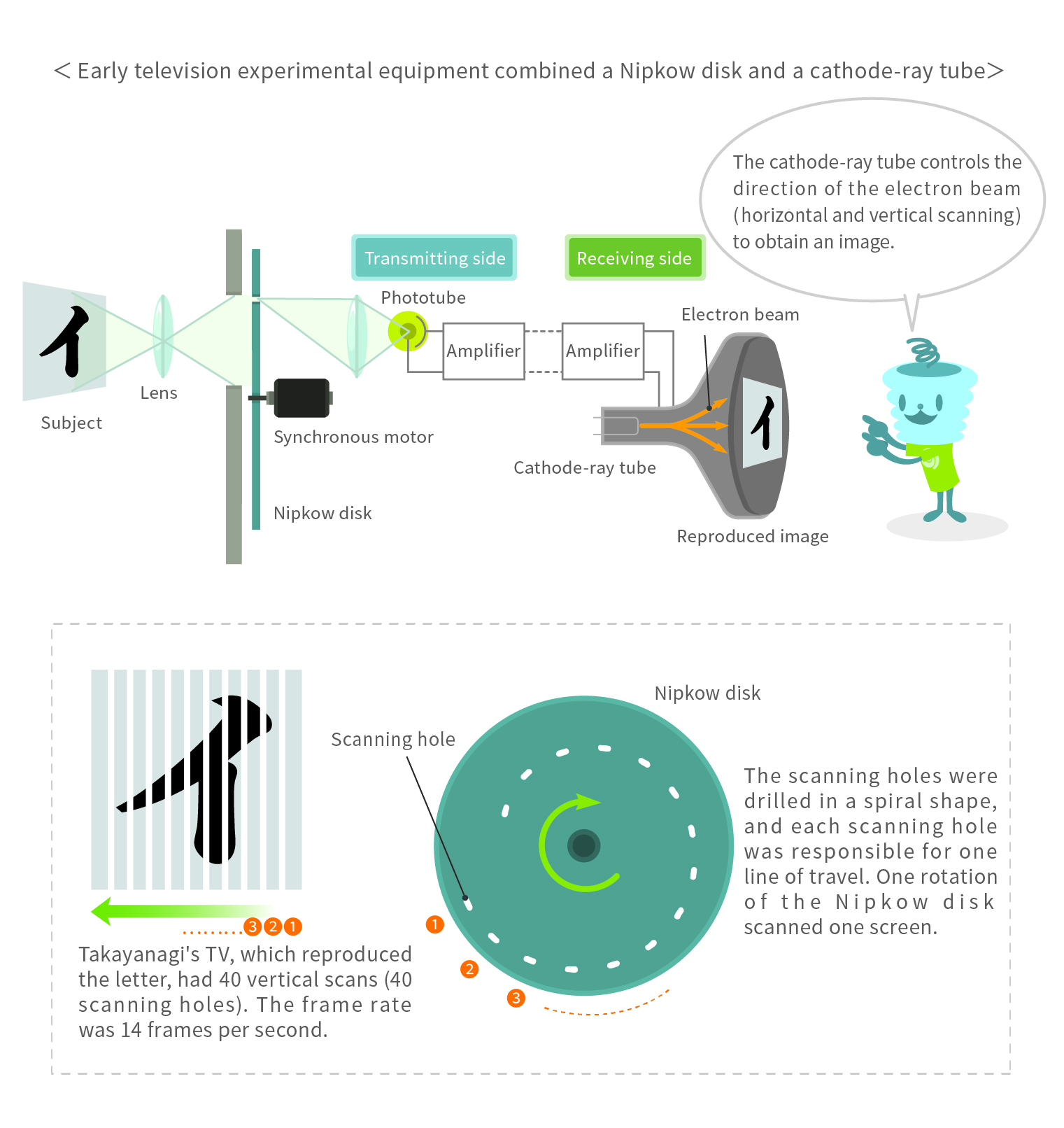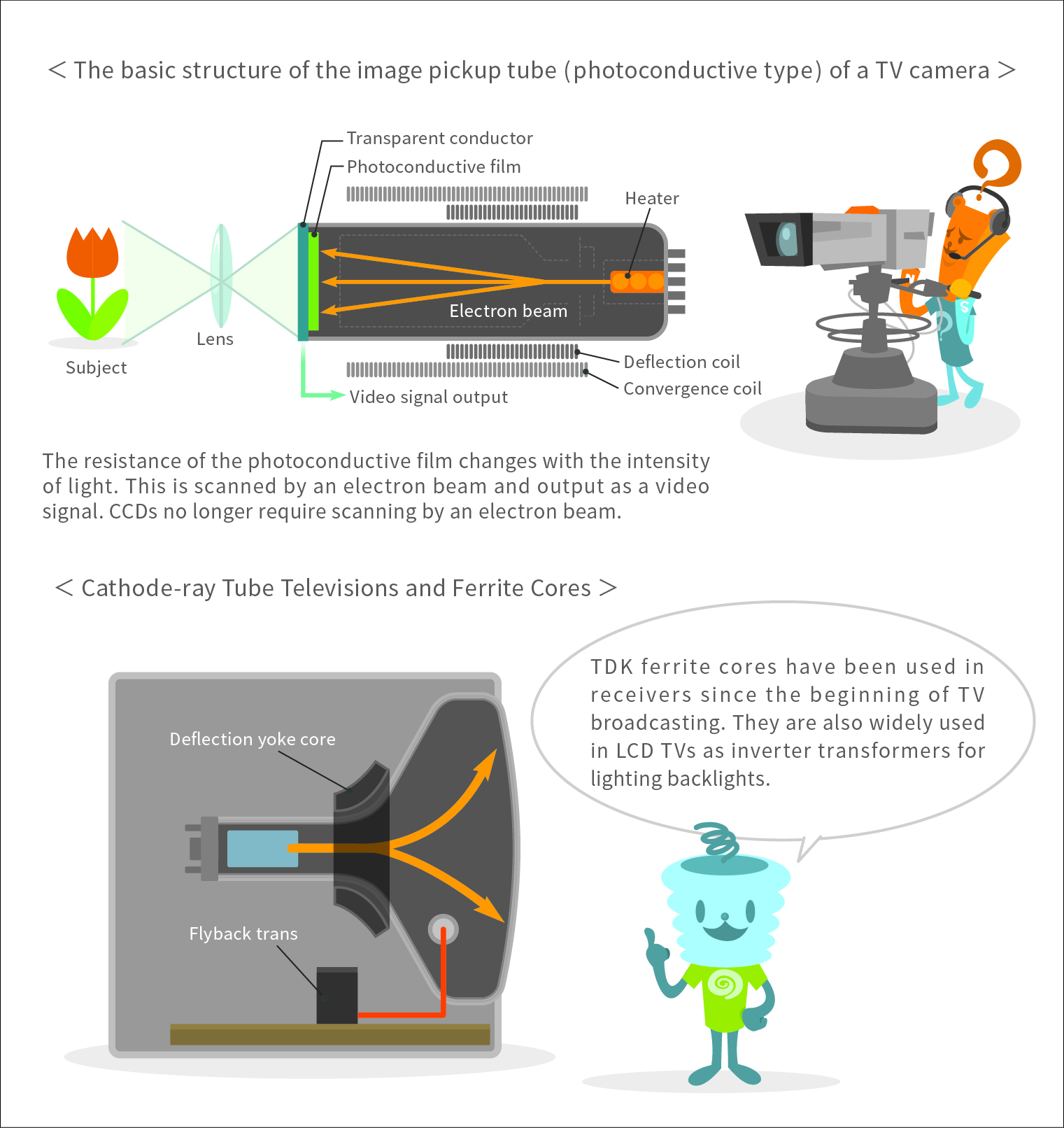The Wonders of Electromagnetism
Fascinating History and Technological Evolution of Television

The world's first TV broadcasting started in Germany in 1935, and in 2011, all Japanese TV sets transitioned to digital broadcasting. Japanese technology has also contributed to the realization and evolution of TV broadcasting.
We look back at the history of TV broadcasting in Japan and the evolution of TV technology over the past century.
History of TV Broadcasting in Japan
NHK, the only public broadcaster in Japan, started TV broadcasting for the first time on February 1, 1953. On August 28 of that same year, the Nippon Television Network Corporation became the first commercial broadcaster to start TV broadcasting, paving the way for the establishment of TV stations all over Japan.
However, in that time, televisions were considered a luxury item, costing several times the average office worker income, which made it an unaffordable item for most ordinary households. It wasn't until the late 1950s, when Japan's economy entered a period of rapid growth, that television proliferated among ordinary households. On April 10, 1959, just before the live broadcast of the then Crown Prince's wedding, the number of television subscriptions exceeded 2 million.
The color television started boosting its sales from 1960s, when NHK and other four broadcasters begun with colored television transmissions. The 1964 Tokyo Olympics played a significant role to widespread popularity of color television. By 1975, the household adoption rate of color television had exceeded 90%. Subsequently, satellite broadcasting started in the 1980s, followed by high-definition broadcasting in the 1990s and the introduction of terrestrial digital broadcast in 2003.
By 2011, all Japanese television sets had switched over to digital broadcasting. Subsequently, experimental broadcasts of 4K Super Hi-Vision in 2014 and 8K Super Hi-Vision 2016 showcased that televisions are constantly evolving to deliver high quality 4K and 8K images to provide more vivid experiences.
A watch engineer's idea gives birth to telegraph and televisions
"YouTube," an Internet-based video sharing platform, has gained popularity. The term "Tube" in “YouTube” is an American slang term for the television set, derived from the cathode-ray tube of the receiver.
The cathode-ray tube (CRT) invented by the German physicist Karl Ferdinand Braun is a device that controls the direction of the cathode ray (a stream of high-speed electrons emitted from the cathode in a vacuum discharge) for observation, and the cathode-ray tube television was an application of this device as an image receiver.
The world's first cathode-ray tube TV experiment was conducted by a Japanese engineer, Kenjiro Takayanagi, an associate professor at Hamamatsu Technical High School (now the Faculty of Engineering, Shizuoka University) in 1926.
There were plans to organize a television broadcast using domestically developed technology, in anticipation of the 1940 Tokyo Olympics (cancelled due to the escalation of the Sino-Japanese war). Japan's pre-war television technology was leading the global forefront. Although experimental broadcasting began in 1941 had to be discontinued due to the outbreak of World War II.
Television, as we know today, has developed and perfected through the various technological achievements with no specific inventor. The concept of transmitting images electrically had its origins in the mid-19th century. In 1842, about 30 years before Alexander Graham Bell's invention of the telephone (1876), Alexander Bain in England invented a device that is said to be considered the precursor to television. This device was known as the "telegraph" (see figure below) operated on the principles of chemical image transmission. Although it was quite distinct from a television, it was a groundbreaking concept of image scanning, which involves breaking up an image into many lines and transmitting them as electrical signals.
Bain was a clockmaker, and the telegraph's image scanning mechanism incorporated the motion of a pendulum. At the end of a pendulum, a contact needle was attached, and the motion of the pendulum effectively scanned and transmitted the image through the contact needle.

Television using cathode-ray tubes is a technology that originated in Japan
Improvements to Bain's device led to the development of a practical phototelegraphic transmitter in the 1920s, which later led to the widespread use of facsimile machines that used telephone lines.
On the other hand, Bain's device also provided a major inspiration for the development of television, which transmitted moving images via electrical signals. Although movie technology had already emerged by the end of the 19th century, movies and television are technically different.
Movies have their origins to techniques such as the flip book, where sequences of a drawings in the book's corner create a perception of movement. In movies, instead of flipping through the pages, the moving image is obtained by feeding photographic film frame by frame. Movies rely on optical instruments for both filming and screening.
Television, on the other hand, is a new system that converts the image itself into an electrical signal, transmits it and displays it back as an image.
Differently, Bain's device, which uses the motion of a pendulum, can transmit staticimages, but faces challenges to transmit moving images because high-speed scanning of images is necessary to transmit motion in television.
Paul Julius Gottlieb Nipkow, a German, invented the Nipkow disk (1884), which has small holes in a spiral shape. As the disc rotates, each hole cuts the image of the subject into lines and breaks up the image.
The television developed by Kenjiro Takayanagi combines mechanical scanning using a Nipkow disk and a cathode-ray tube receiver. The mechanism is shown in the figure below.
The intensity of light from the scanning lines of the Nipkow disk was converted into electrical signals by a phototube (a vacuum tube that functioned as a light sensor) and sent to the receiver so that characters drawn with a brush were clearly displayed on the cathode-ray tube (1926). Although this device was still wired and the image capture was still mechanical, it was the world's first television using a cathode-ray tube as the image receptor and was a significant step closer to a fully electronic television.

Ferrite core also used in CRT television
Kenjiro Takayanagi quickly recognized the limitations of mechanical scanning and developed the concept of an electronically scanning image pickup tube. The image pickup tube serves as the core component of a TV camera, and without it, TV broadcasting would not have been possible.
In 1933, Vladimir K. Zworykin developed in the U.S the first imaging tube, known as the iconoscope. This was the same type of imaging tube that Takayanagi had envisaged, and shortly after, Takayanagi successfully developed a domestically produced version of the iconoscope. The iconoscope and its improved image orsicon were of the photoelectron emission type, which required extensive lighting for indoor shooting. To tackle this illumination challenges, were developed a highly sensitive imaging tube called a photoconductive type. Before the adoption of solid-state imaging such the CCDs, television cameras used photoconductive imaging tube such as Vidicon and Saticon.
Such technologies started to evolve more once after the end of World War II. Since then, TDK's electronic components have been used in TV receivers, with important elements such as ferrite products cathode-ray tube deflector yoke cores and flyback transformer cores. The deflection yoke core, for example, is the central component of the deflection coil that controls the electron beam emitted from the electron gun of the cathode-ray tube with a magnetic field (horizontal/vertical scanning). Meanwhile, the flyback transformer is a special transformer designed to generate the high voltage required to drive the cathode-ray tube.
Established in 1935 with the objective of industrializing ferrite, TDK had already produced roughly 5 million ferrite products even before World War II, which were used in radio communication equipment and radios. This technology heritage was passed down from one generation to next during the chaotic postwar period and effectively utilized during the television era. In the present day, flat televisions such as liquid crystal displays (LCDs) and plasma displays are replacing cathode-ray tubes as the mainstream, and TDK's electronic components, including ferrite products, are contributing to making flat televisions thinner and more energy-efficient.

TDK is a comprehensive electronic components manufacturer leading the world in magnetic technology






